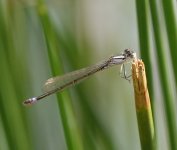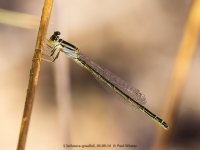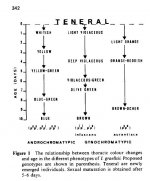Found today in Ibores, Extremadura this Bluetail seems to have mix of features. In addition to it being almost white, the bluetail is very limited in extent and has the dots more typical of Scarce. The thorax pattern seems more like Iberian - perhaps the more expected species here.
The pterostigma don't seem to quite fit either
Comments would be most welcome
The pterostigma don't seem to quite fit either
Comments would be most welcome








